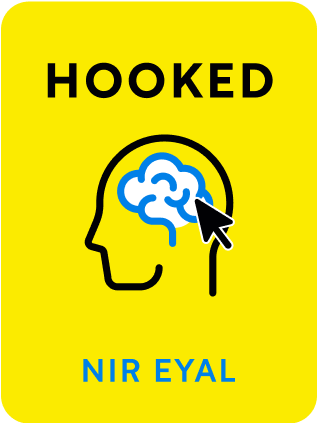

This article is an excerpt from the Shortform summary of "Hooked" by Nir Eyal and Ryan Hoover. Shortform has the world's best summaries of books you should be reading.
Like this article? Sign up for a free trial here .
What is the Hooked investment strategy? What is the relationship between investment and perceived value?
In Hooked, investment increases perceived value. When a user invests in a product, they are less likely to move to a different product.
Read more about Hooked, investment, and perceived value.
Investment and Value Relationship
The more effort we put into something, the more we value it, and the more likely we are to return.
Three psychological tendencies cause the Hooked investment effect:
- The IKEA effect
- Investing labor in something causes you to value it more
- Experiment: People who made origami themselves valued it 5x higher than third party bids.
- Consistency bias
- We want current behavior to be consistent with past behavior
- Experiment: People who were asked to place a window sticker for a political cause were then 4x more likely to place a large yard sign, compared to people who were asked to place a large yard sign upfront.
- Cognitive dissonance
- If you dislike an action you’re doing, you have dissonance in your mind – “why am I doing this if I hate it?” To resolve the dissonance, you tend to value the action: “I must actually like doing this for me to continue doing it.”
- Acquired tastes like spicy food and bitter beer may stem from this. “This tastes bad, so why am I eating it? Well I must actually enjoy it.”
- (Shortform note: Ben Franklin gave advice on how to get people who don’t like you – ask them a favor. If they do you the favor, they resolve the cognitive dissonance by believing they liked you more than they previously thought.)
Thus, to encourage a user to return and build a habit, prompt them to put something of value into the system so that they value the app more highly and pave the way for longer-term rewards.
Often the user’s investment increases the value of future rewards, building a virtuous cycle of usage that becomes ever more valuable. The extra value can come from personalization through data or enhanced user abilities. Furthermore, the user’s investment increase the switching costs to using a rival product – it means forsaking everything they’d built up.
Hooked Investment Examples
- In iTunes and Spotify, users add songs to their collection. The services learn the users’ preferences and surface more music they’ll like. Introduction of new music provides triggers for users to return.
- In Facebook, people’s digital lives are largely cataloged in the timeline – photos, videos, status updates, articles shared, friends’ content liked. Facebook learns the user’s preferences and surfaces content that encourages more engagement. New social content is a compelling trigger to return. In Hooked, investment comes from the social network people have built up.
- In LinkedIn, users offer their own personal employment data as a virtual resume. Adding more details increases the likelihood they can gain contacts or job opportunities. Connection requests and profile views are triggers to return, engage, and further improve their profile.
- In Mint, users contribute financial data to supervise cashflow in one place. Adding more financial accounts allows Mint to provide more helpful recommendations and enables features like budget setting. Useful triggers arise when budgets are broken, suspicious transactions are detected, or ways to save money appear.
- In Twitter, people follow other accounts to personalize content (see “content curation” above) but also collect followers if they are active tweeters. Having more followers makes every tweet more impactful as a content creator. Triggers arise when you post content that followers reply to and retweet.
- In Tinder and any dating app, users express preferences for each other. More usage allows the app to deliver people you’re more likely to have romantic success with. Triggers arise when people you’re interested in also express interest in you or send messages. In Hooked, investment comes from the time you’ve spent identifying possible connections.
- In Snapchat, texting, and messaging in general, the barrier to responding is very low. Adding a friend in one messaging app makes it more valuable for both people (Metcalfe’s Law). Triggers arise when you receive messages from people you care about.
- In eBay, Yelp, and Airbnb, building a strong reputation as a vendor increases your customer flow. Maintaining a 5-star rating takes serious work, which makes highly-reviewed services all the rarer and more valuable. Triggers arise when threats to reputation like bad reviews appear.
- In Reddit, Quora, Stackoverflow, and forums, users accumulate points and status for being of value to the community. Higher reputations make your contributions seem more valuable, and thus contribute further to your reputation. In Hooked, investment comes from the reputation you’ve built up.

———End of Preview———
Like what you just read? Read the rest of the world's best summary of Nir Eyal and Ryan Hoover's "Hooked" at Shortform .
Here's what you'll find in our full Hooked summary :
- The 4 key steps that addictive tech products use to ensnare you
- Why user rewards need to be random and variable to have the strongest effect
- How to build irresistible apps yoruself






